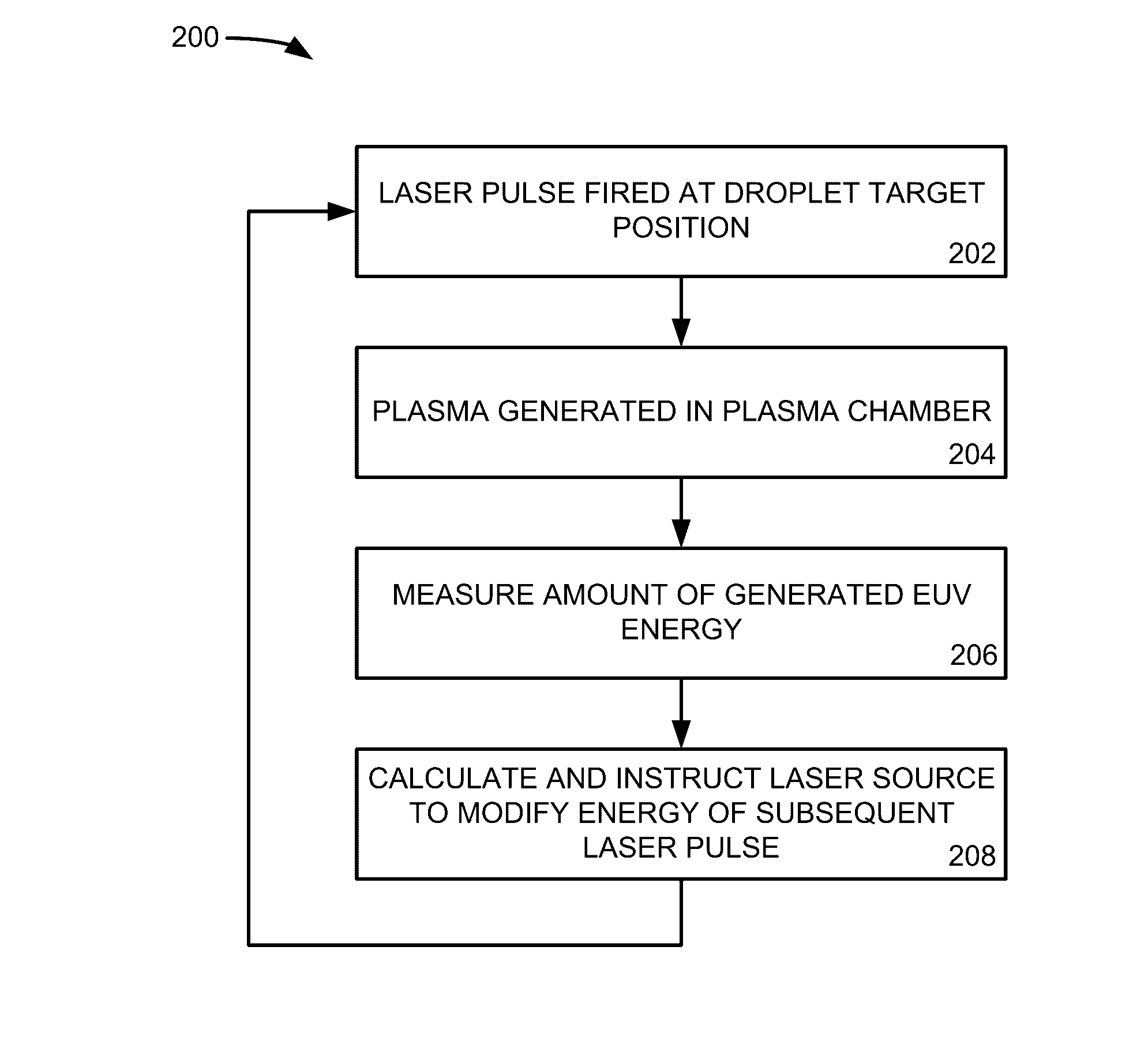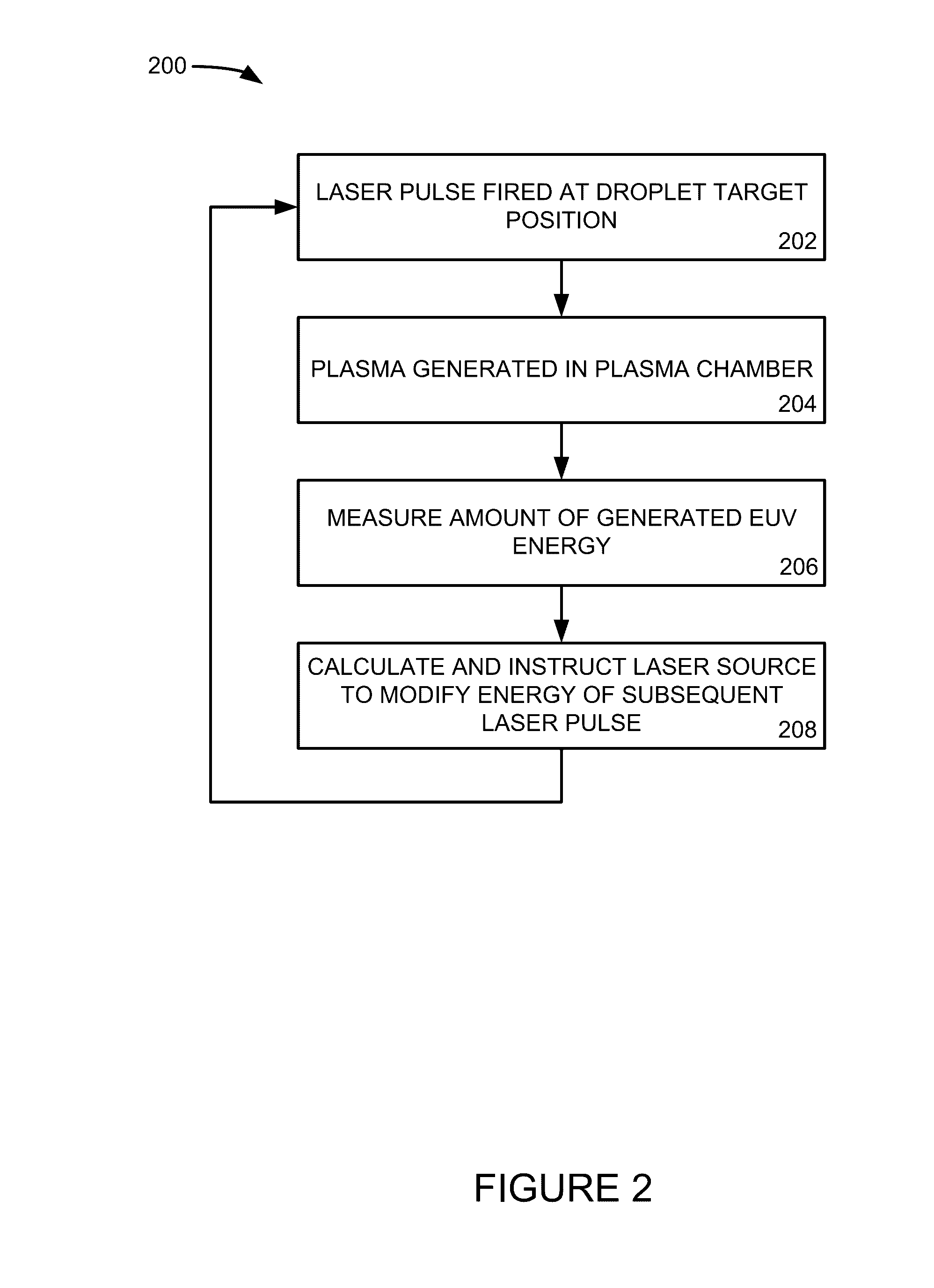Systems and methods for stabilization of droplet-plasma interaction via laser energy modulation
a droplet-plasma and laser energy modulation technology, applied in the field of system and method for stabilizing such droplet-plasma interaction systems, can solve the problem of relatively slow approach in comparison to the operation of the system
- Summary
- Abstract
- Description
- Claims
- Application Information
AI Technical Summary
Benefits of technology
Problems solved by technology
Method used
Image
Examples
Embodiment Construction
[0015]In LPP EUV systems, a plasma is created when a droplet is impacted by a laser pulse in a plasma chamber. In an idealized model of the LPP EUV system, the created plasma does not affect, or exert any forces on, subsequent incoming droplets. However, in practice, the plasma and the impact of the droplets on the plasma do exert forces on the subsequent incoming droplets in the plasma chamber. The forces can be sonic shockwaves, pressure waves, audio waves, or other types of forces. These forces cause the subsequent droplets to alter their flight by changing speed and / or getting deflected as they approach the plasma being generated. The laser beam then makes less than ideal contact with the subsequent droplets, which further varies the resulting generated plasma and the forces generated therefrom. To counteract these effects in prior approaches, the laser source expends increasing amounts of reserve power to target an ever-widening region in which a target droplet is likely to be ...
PUM
 Login to View More
Login to View More Abstract
Description
Claims
Application Information
 Login to View More
Login to View More - R&D
- Intellectual Property
- Life Sciences
- Materials
- Tech Scout
- Unparalleled Data Quality
- Higher Quality Content
- 60% Fewer Hallucinations
Browse by: Latest US Patents, China's latest patents, Technical Efficacy Thesaurus, Application Domain, Technology Topic, Popular Technical Reports.
© 2025 PatSnap. All rights reserved.Legal|Privacy policy|Modern Slavery Act Transparency Statement|Sitemap|About US| Contact US: help@patsnap.com



